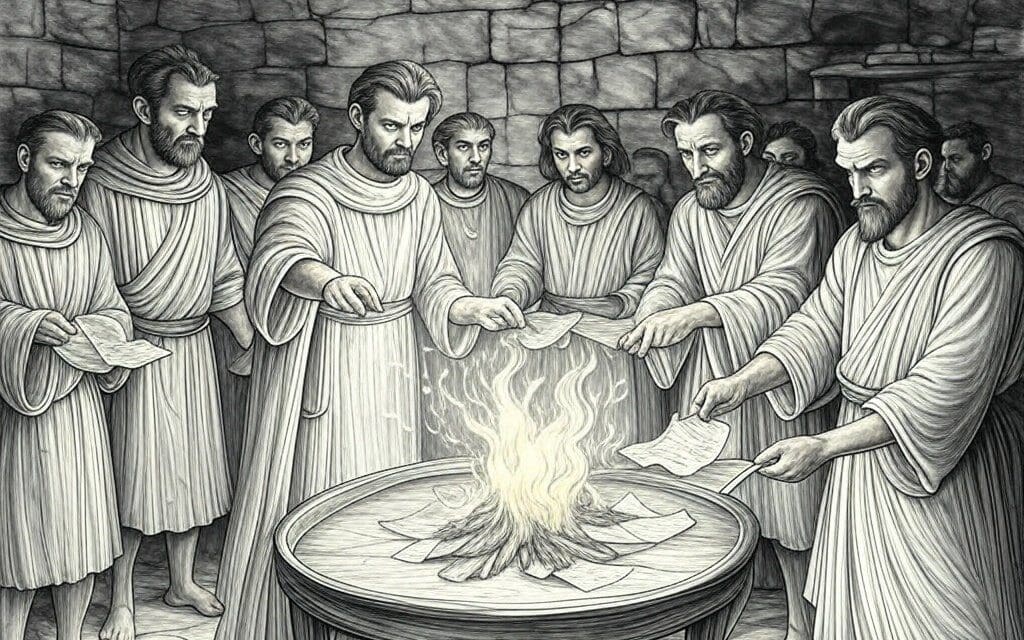Critiques of Sola Scriptura: Challenges to Bible-Only Authority
The doctrine of Sola Scriptura—the belief that the Bible alone is the ultimate and infallible authority for Christian faith and practice—has been a cornerstone of Protestant theology since the Reformation. However, this principle faces significant critiques that question its foundational assumptions. Below, we explore some of the strongest arguments against Sola Scriptura, presented clearly and logically.
1. Circular Reasoning Undermines Its Foundation
Proponents of Sola Scriptura often cite 2 Timothy 3:16-17 (“All Scripture is God-breathed and is useful for teaching, rebuking, correcting and training in righteousness”) to argue for the Bible’s sufficiency and authority. Yet, this approach is inherently circular: the Bible claims its own infallibility, but no external authority—such as tradition or a divinely guided institution—validates this assertion. This self-referential logic weakens its philosophical credibility.
2. Human Fallibility in Writing and Transmission
Even if divine inspiration is accepted, the Bible was penned, copied, and preserved by fallible humans. Textual variants—such as the differing endings of Mark 16 or the addition of the Johannine Comma in 1 John 5:7-8—demonstrate scribal errors and alterations. With the original manuscripts lost, we rely on copies subject to mistakes, intentional edits, or cultural influences, raising doubts about the Bible’s infallibility without an external corrective mechanism.
3. Canon Formation Requires Extra-Scriptural Authority
Sola Scriptura assumes a fixed, authoritative biblical canon, yet Scripture itself provides no list of inspired books. The canon emerged through human councils—like the Council of Hippo (393 AD) and Carthage (397 AD)—guided by tradition and church authority. Disputes over books like the Deuterocanonicals reveal that human judgment, not divine self-evidence, shaped the Bible, undermining its claim to sole sufficiency.
4. Linguistic and Translational Ambiguity
Written in Hebrew, Aramaic, and Greek, the Bible’s languages differ vastly from modern contexts. Translation compounds this issue; for instance, the Greek logos in John 1:1 (“the Word”) loses philosophical nuance in English, while “hell” merges distinct terms like Gehenna and Hades. These shifts obscure meaning, suggesting the need for an authoritative interpreter beyond the text itself.
5. Missing Content and Historical Gaps
The Bible references lost works, such as Paul’s earlier letter in 1 Corinthians 5:9 or the Book of Jasher (Joshua 10:13). Early Christians also used texts like the Shepherd of Hermas, later excluded from the canon. Key doctrines, such as the Trinity, lack full scriptural clarity, implying the Bible was not intended as a standalone authority but part of a wider tradition.
6. Interpretive Chaos Without a Living Authority
Sola Scriptura posits that individuals, guided by the Holy Spirit, can rightly interpret Scripture. Yet, this has led to thousands of denominations with conflicting views on baptism, predestination, and the Eucharist. Such diversity highlights Scripture’s lack of clarity or sufficiency, pointing to the need for a living authority—something Sola Scriptura explicitly rejects.
7. Historical Context: The Early Church Lived Without a Fixed Bible
For centuries after Christ, Christians relied on oral tradition and apostolic teaching, not a completed Bible. The New Testament emerged decades after Jesus, and its canon solidified much later. Early orthodoxy thrived through bishops, councils, and liturgy, suggesting that a “Scripture alone” model was neither practiced nor essential in the early church.
8. Concepts Removed or Altered Over Time
Human decisions shaped the Bible’s content. The Masoretic Text differs from the Septuagint, altering verses like Psalm 22:16. Reformers like Luther even questioned books such as James for theological reasons. These shifts demonstrate that Scripture’s form and interpretation have been subject to human influence, challenging its status as an absolute, unchangeable authority.
Conclusion
These critiques collectively expose flaws in Sola Scriptura. Its circular reasoning, susceptibility to human error, and reliance on extra-scriptural processes for canonization and interpretation reveal deep inconsistencies. Linguistic challenges, historical gaps, and the Bible’s own limitations suggest it was never meant to stand alone. Critics argue that while Scripture is invaluable, it thrives within a living tradition or authoritative framework—something Sola Scriptura cannot embrace without contradicting itself.






